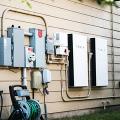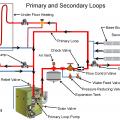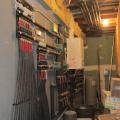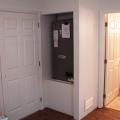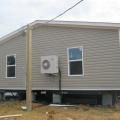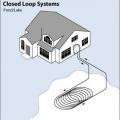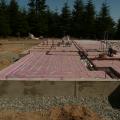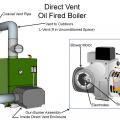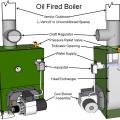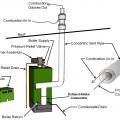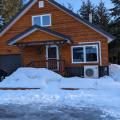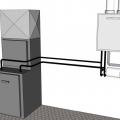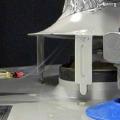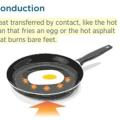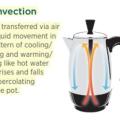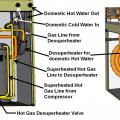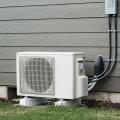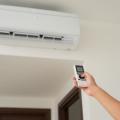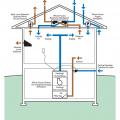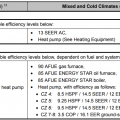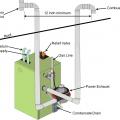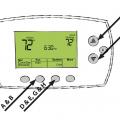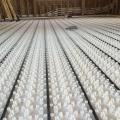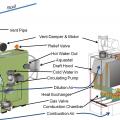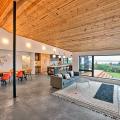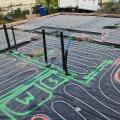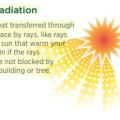Showing results 1 - 50 of 104
A battery storage system can provide reliable back-up power during a grid power outage
A boiler system can be set up with primary and secondary loops to supply hot water for multiple uses
A Category I induced draft boiler uses an induced draft fan to pull air through the combustion chamber and to the flue
A ground source heat pump with an open-loop piping system using vertical injection and recharge
A ground-source heat pump has the same components as a standard air-to-air heat pump except that the liquid-to-refrigerant heat exchanger coil is located inside rather than outside
A ground-source heat pump with a closed-loop horizontal “Slinky™ “piping arrangement
A high-efficiency gas boiler provides hot water to the faucets, to radiant heating loops in the basement floor, and to a hydro-coil for a central air heating system.
A high-efficiency heat pump is installed in a closet within this home’s conditioned space.
A mini-split air-conditioning system can be a highly effective low-energy approach to provide cooling to one designated zone in the house
A single ductless heat pump heats and cools the country’s first DOE Zero Energy Ready certified manufactured home.
After setting precast concrete basement walls on an 8-inch bed of trap rock, this builder sprayed 2 inches of closed-cell spray foam directly onto the ground then laid piping for radiant floor heating before pouring the concrete floor slab.
An ultra-efficient layer of R-20 rigid foam foundation insulation covers the ground underneath the vapor barrier and radiant floor loops, which will circulate water heated by an ultra-efficient geo heat pump.
By plotting the heating capacities at -4°F and 5°F and drawing a line between them, the capacity at 0°F can be estimated
Category III oil-fired, sealed-combustion boiler configured as a direct-vented appliance that draws its combustion air from outside
Category III oil-fired, sealed-combustion boiler with the burner assembly cover removed
Cold-climate heat pumps can provide heating and cooling even in climate zone 7; this home retained a fuel oil boiler system for backup on the coldest days.
Conduction is heat transferred by contact, like the hot pan that fries an egg or the hot asphalt that burns bare feet.
Convection is heat transferred via air or liquid movement in a pattern of cooling/falling and warming/rising like hot water that rises and falls in a percolating coffee pot.
Ductless indoor units like this one are controlled individually by handheld remote controllers.
Heated air flow is produced when the heating cycle is energized (set thermostat to “heat”)
Hot water for the home’s radiant floor heating system comes from roof-mounted solar thermal panels and an air-to-water heat pump provide.
In a Category I gas-fired, natural-draft boiler, the natural draft of the heated flue pulls combustion air through the draft hood into the combustion chamber
In heating mode, split system heat pumps absorb heat from the outside air and “pump” that heat to the indoor air handler unit, which releases it to the inside air.
Passive cooling techniques can reduce or eliminate the use of air conditioning and can be used for backup cooling during emergencies.
PEX piping is laid over 2 inches of XPS before the slab is poured to create a radiant floor heating system in this extensive home remodel.
PEX piping loops are laid before the slab is poured for this radiant floor heating system
Radiation is heat transferred through space by rays, like rays of sun that warm your skin if the rays are not blocked by a building or tree.
Right - An energy recovery ventilation (ERV) brings fresh air into the home while exhausting stale air. Both ducts pass through a heat exchanger where heat from the warmer duct is transferred to the cooler duct.
